Lek Kiatsirikajorn

Lost In Paradise

Lost In Paradise
After almost seven years of studying and working as a fashion photographer assistant in the UK, talented Thai photographer Lek Kiatsirikajorn is now back in Bangkok and working on
some series of works that focus on social issues and political situations in Thailand.
Gallery Photographs is pleased to present a selection of 26 images from his 2 documentary projects, “As Time Goes By” and “Lost In Paradise” with the exclusive interview with the artist.
“As Time Goes By” is a collection of works created out of a sense of guilt for his parents, whom he had not seen for years. This is a realistic portrayal of emotions that we all may experience.
“Lost In Paradise” was produced with the support of the Quai Branly museum in Paris. Lek was one of the three selected photographers for the 2012 photography grant.
13 images from this series were included in the museum’s photography collection.
才能あふれるタイの写真家 Lek Kiatsirikajorn 氏は、英国で約7年間ファッションフォトグラファーのアシスタントを務めた後、現在バンコクでタイの社会問題や政治情勢をテーマとしたやドキュメンタリー
作品制作に取り組んでいます。
この度、Gallery Photographsでは、彼のドキュメンタリー・プロジェクト、”As Time Goes By “と “Lost In Paradise “から26点の作品をご紹介いたします。 インタビュー記事と合わせてお楽しみくださいませ。
「As Time Goes By 」は、何年も会っていなかった両親への罪悪感から制作に至った作品群です。誰もが経験するであろう感情が非常にリアルに描かれています。
「Lost In Paradise」は、パリのケ・ブランリー美術館の協力を得て制作されました。Lek氏は、2012年に写真部門の助成対象者に選ばれた3人のうちの1人です。このシリーズのうち13点の作品が、同美術館
の写真コレクションに含まれています。
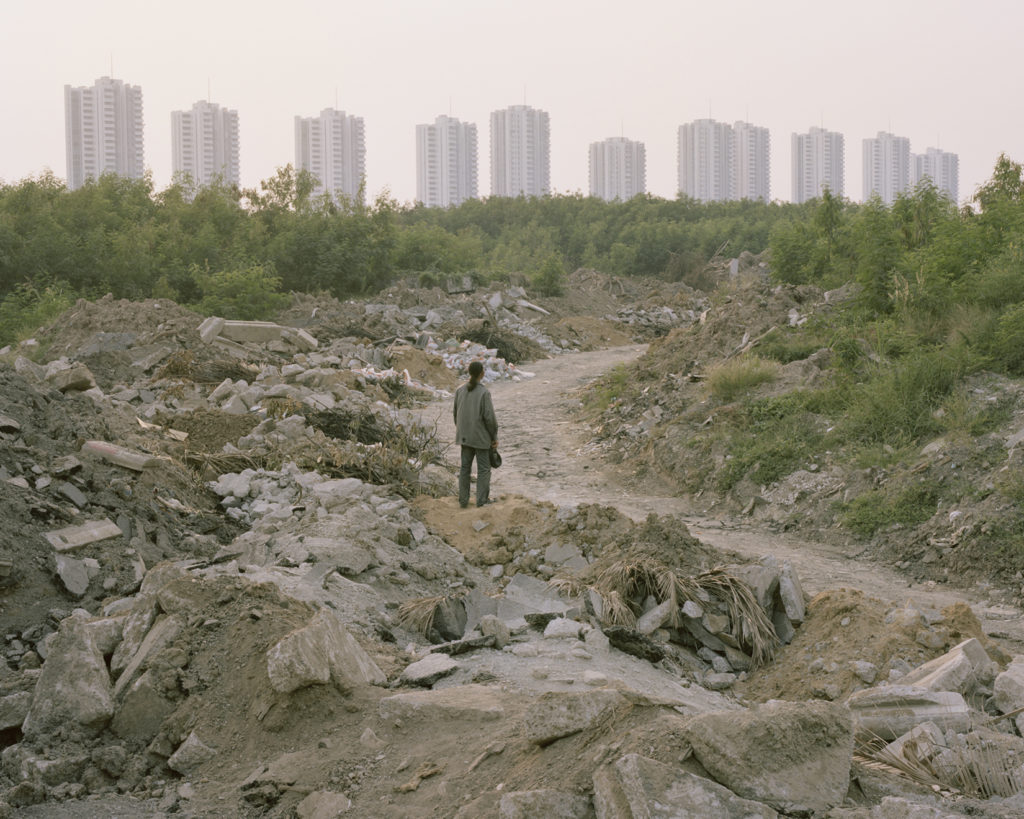
Lost In Paradise

Lost In Paradise

Lost In Paradise
INTERVIEW
-Firstly, will you tell us how you started photography?
I graduated in fine arts from Silpakorn University in Bangkok. My major was painting. I bought my first Nikon FM2 camera when I was on the second year at the university.
Photography was just a hobby back then. I did not have much knowledge about it, but after a while I became fascinated by its potentials and the circulation in the media it’s reached. I saw photos everywhere,
in magazines, in newspaper, on billboards and etc. I wanted my art works to be seen in a larger circulation so I thought photography in something I should pursuit. Having said that,
at that time I had so little knowledge about the theory and the genres in photography. I did not know the difference between the photos on the billboards and the photos in newspapers,
nor the context that those photos were in. So, in 2001 I decided to go to England to foster my photography knowledge. I studied my photography at The Arts institute at Bournemouth.
It is undeniable that my fine arts background laid a solid foundation for my photography both visually and conceptually.
-まず、写真を始めたきっかけを教えていただけますか?
私はバンコクのシラパコーン大学でファインアートを修了しました。専攻は絵画でした。初めてNikon FM2を購入したのは大学2年生の時でした。当時、写真は単なる趣味でした。あまり知識はありませんでしたが、
しばらくすると、その可能性とメディアでの流通に魅了されるようになりました。雑誌、新聞、看板など、あらゆるところで写真を目にしました。私は自分の作品をより多くの人に見てもらいたいと思っていたので、
写真は追求すべきものだと思いました。とはいえ当時の私は、写真の理論やジャンルについてほとんど知識がありませんでした。ビルボードの写真と新聞の写真の違いも、その写真が置かれている状況も知りませんでした。
そこで2001年、私は写真の知識を深めるためにイギリスに行くことにしました。アート、デザイン、メディアを専門とするボーンマス大学で、写真を学びました。私のファインアートのバックグラウンドが、
視覚的にも概念的にも、私の写真の確固たる基礎を築いたことは間違いありません。
-You are currently based in Thailand, but do you work mainly as a documentary photographer? Or do you also work for magazines and advertisements?
For my living, I work as a commercial photographer. I mostly work on advertisements but I get editorial assignments from magazines from time to time.
I fund my documentary projects with the money I earn from commercial assignments. There is nothing related between my commercial works and my documentary works.
It works for me to separate the two completely because they have different motivations and purposes.
-現在タイを拠点とされていますが、主にドキュメンタリー写真家として活動されていますか? もしくは雑誌や広告などのお仕事もされていますか?
私は仕事としては、コマーシャル・フォトグラファーとして活動しています。主に広告を撮影していますが、雑誌からエディトリアルの仕事を受けることもあります。
ドキュメンタリー作品の制作資金は、コマーシャルの仕事で得たお金で賄っています。私のコマーシャル作品とドキュメンタリー作品の間には何の関係もありません。
この2つは、動機や目的が違うので、完全に分けて考えるのが私には合っているのです。

As Time Goes By

As Time Goes By
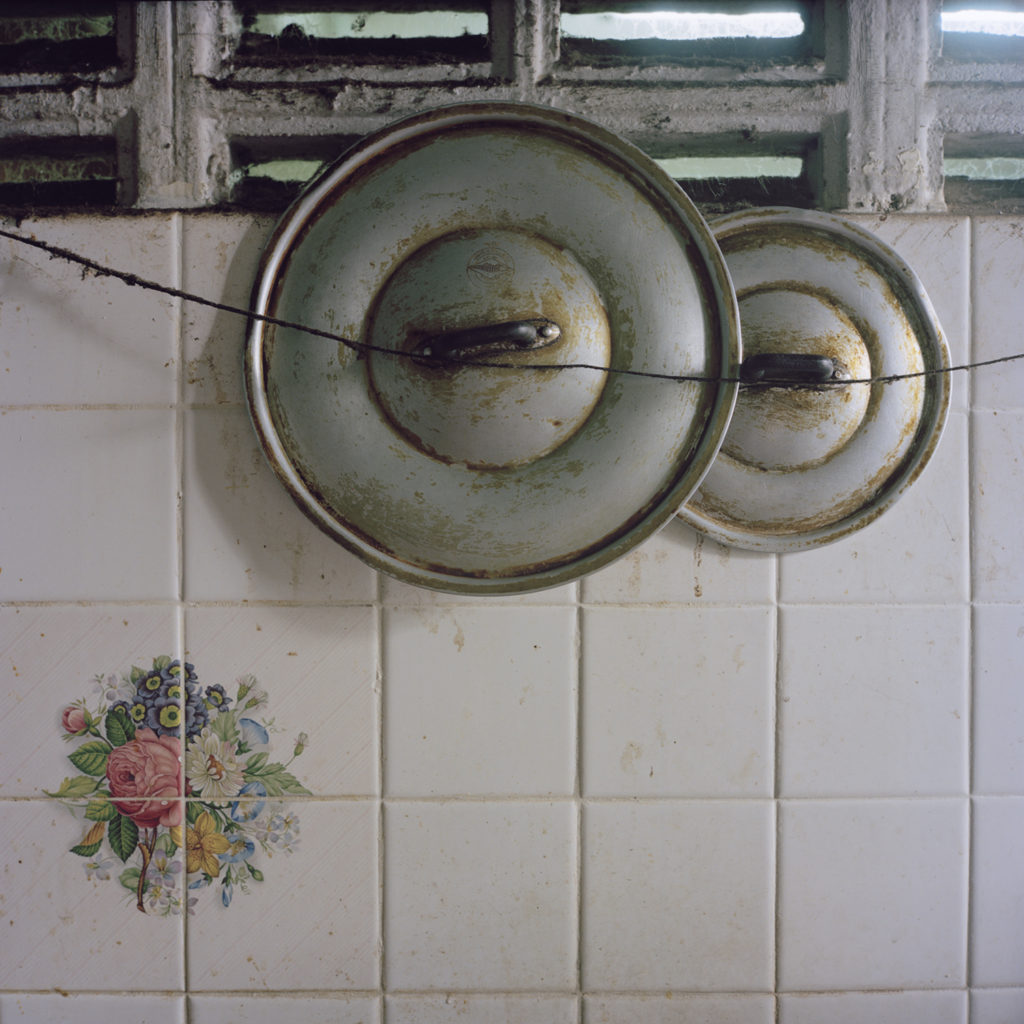
As Time Goes By

As Time Goes By
-Please tell us about your photographic series “As Time Goes By”and “Lost in Paradise”?
“As Time Goes By”
I came back home in 2008, after seven years of study and work in England. I found my parents are a lot older than the last time I saw them. Their bodies are worn out in our house,
which is decaying. It is said that our body is the house of our soul. So, I am uselessly watching the houses of their souls gradually dilapidated together with this house we have been living in.
Our house can be refurbished or even reinforced from time to time, but there are no these options for the houses of their souls.
To me, this project is a psychological therapy through the photography process. I started photographing my parents to reduce the continuing guilt in my mind,
and to tell myself at least I do something for them after years of neglect. It is also to remind myself about the hours we have left to spend together.
The more I photograph them the clearer I see myself. I flew away for 6000 miles. I have searched for my soul for several years in a foreign land,
just to find it has always been at home in front of my camera.
“Lost In Paradise”
This project is focusing on rural migrant workers who have left their region of origin to work and live in Bangkok, existing in no man’s lands of peri-urban settlements where, paradoxically, nature
is beginning to reassert its authority. Through these images I aim to present an allegory for modern Thailand: the country as a whole, like these workers, left its past of agriculture behind in search
of a better life, but now finds itself trapped between this lost history and a better future which seems to remain just out of reach. I spent 3 years to complete this project, started from 2011 and
finished in 2013.
To me agriculture is the taproot of Thailand. Nearly half of the populations are farmers. Our tradition and culture are directly related to it. In the 1980s, the Thai government at that time wanted
Thailand to become the 5th tiger of Asia. It means the 5th industrialized and developed country, in line with Hong Kong, Singapore, South Korea and Taiwan. The government passed laws and
regulations that urged the international industrial investments in the country. Since then the numbers of agricultural workforce have decreased. Vast areas of agricultural land have been turned
into industrial districts. Young rural workers have been heading toward jobs in factories and other industries in big cities instead. This situation forces the older generations of farmer to continue
working in the fields and when they get too old to work, there is no one to pass on their wisdom to. The decline of agricultural resources is one of the major problems Thailand is facing today.
It has been about 3 decades since the ambition of the Thai government in the 1980s. We still have not reached our goal of becoming the 5th tiger of Asia, not even close. Instead, our taproot has
been rotted away by false policies. The rural migrant workers are like Thailand. They left their past for Bangkok in the hope of a better future just to find themselves came to a standstill in the
middle between their long lost past and their unobtainable future. Only time can tell how long this big tree of Thailand will still be able to stand.
-作品シリーズ「As time goes by」と「Lost in Paradise」について教えてください。
「As Time Goes By」
私は7年間イギリスで写真の勉強と仕事をした後、2008年に帰国しました。両親は、前回会ったときよりも随分年をとっていました。最後に見たときよりもずっと年老いていました。彼らの体は、朽ち果てていく家の中で
すり減っているのです。肉体は魂の家だと言われています。その魂の家が、今まで住んでいたこの家と共にだんだんと朽ちていくのを、私はただ無力に眺めているのです。家というのは、時々改装したり補強したりすること
ができますが、両親の魂の家(体)にはそのような選択肢はありません。
私にとってこのプロジェクトは、写真を撮ることによる心理的な治療です。私が両親の写真を撮り始めたのは、心の中に残る罪悪感を軽減するためと、何年も放置されてきた両親のために少なくとも何かをしていると自分に
言い聞かせるためでした。また、私たちが一緒に過ごせる残された時間を思い出すためでもあります。彼らの写真を撮れば撮るほど、自分自身の姿がはっきりと見えてきます。私は6000マイルの距離を移動してきたのです。
そして異国の地で数年間自分の魂を探してきたのです。でも実は、それはいつもカメラの前の「我が家」にあったのです。
「Lost In Paradise」
このプロジェクトでは、故郷を離れてバンコクで働き生活する地方の出稼ぎ労働者に焦点を当てています。彼らは、都市郊外にあるため逆説的に自然がその権威を取り戻し始めている 言わば無人地帯で生活しています。
私は、これらの写真を通して、現代のタイの寓話を提示することを目指しています。それは、タイ全体が、彼ら労働者のようにより良い生活を求めて農業の過去を捨てた結果、現在は失われた歴史と手の届かない理想の
未来の間に閉じ込められているということです。私は、2011年から2013年までの3年間をかけてこのプロジェクトを完成させました。
私にとって、農業はタイの根幹です。タイ国民の半分近くが農業を営んでいます。私たちの伝統と文化は、農業に直接関係しています。1980年代、当時のタイ政府は、タイをアジアの5番目の虎にしたいと考えていました。
香港、シンガポール、韓国、台湾に並ぶ、第5の工業国、先進国という意味です。政府は、国際的な産業投資を促す法律や規制を制定しました。以来、農業従事者の数は減りました。膨大な数の農地が工業地帯に変わって
しまったのです。若い農村労働者は、大都市の工場やその他の産業で働くことになりました。このような状況で、年配の農家は畑仕事を続けなければならず、年老いて働けなくなったときには、その知恵を受け継ぐ人が
いなくなってしまうのです。農業資源の減少は、タイが現在直面している大きな問題の一つです。
1980年代のタイ政府の野望から約30年が経過しました。「アジアの5番目の虎になる」という目標はいまだに達成されていません。それどころか、誤った政策によって私たちの根幹は腐ってしまっています。地方の出稼ぎ
労働者はタイと同じです。より良い未来を求めて、過去を捨ててバンコクにやってきたが、気がついたらその結果、長い間失っていた過去と手に入らない未来の狭間で立ち往生することになる。このタイの大木がいつまで
立つことができるのかは、時間の問題です。

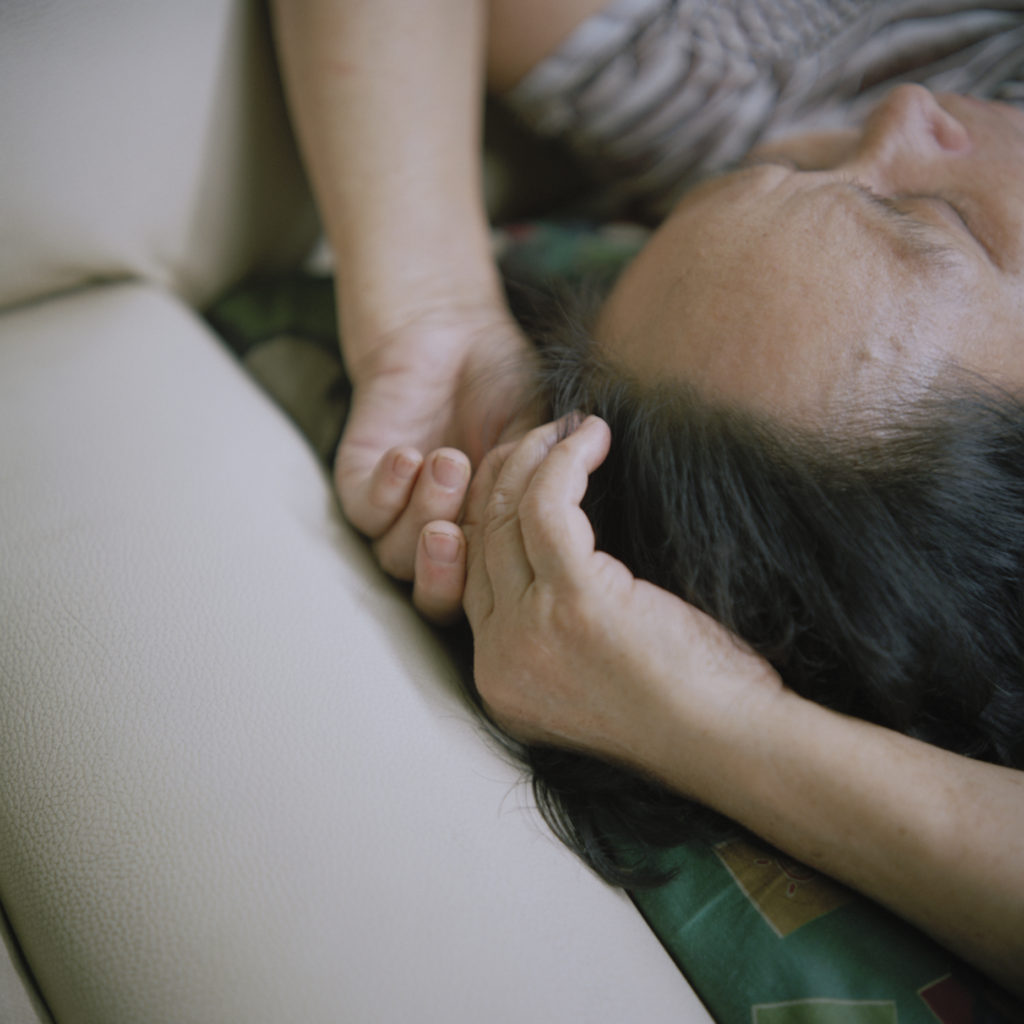


As Time Goes By
-The works from “As Time Goes By” are very realistic, expressing what anyone might feel when returning to their home after a long absence. Surely it will appeal to those who cannot see their
parents because of this Covid-19 disaster. How would you like people to perceive these works in this situation?
To be honest, I do not actually know how to answer this question. I guess, I would like them to perceive the work as it is, no matter if there is Covid-19 or not. These days we are too busy to spend
enough time with our love ones, especially our parents. Covid-19 is probably a disc brake or an eye-opener that slow us down from a fast living speed. It makes us realize what is actually the
substance of our life. I hope “ As Time Goes By ” can function like Covid-19 in this aspect while no one has to pass away.
-“As Time Goes By”は、誰もが久しぶりに故郷に帰った際に感じ得ることが表現されており、非常にリアリティのある作品群となっていますね。今コロナ禍で両親に会えない人々の心にも訴えるものがあると思います。
この状況の中、人々にこの作品をどのように感じ取って欲しいとお考えですか?
正直なところ、この質問にどう答えていいのかわかりません。私は、コロナがあろうとなかろうと、作品をありのままに受け止めてもらいたいと思っています。最近の私たちは忙しすぎて、大切な人たち、特に両親と十分な
時間を過ごすことができません。コロナは、私たちの生活のスピードを落とすためのブレーキや目覚ましのようなものではないでしょうか。それは私たちに、人生の本質とは何かを気づかせてくれます。
“As Time Goes By”が、誰も死なずに済むように、この面でコロナのように機能してくれることを願っています。
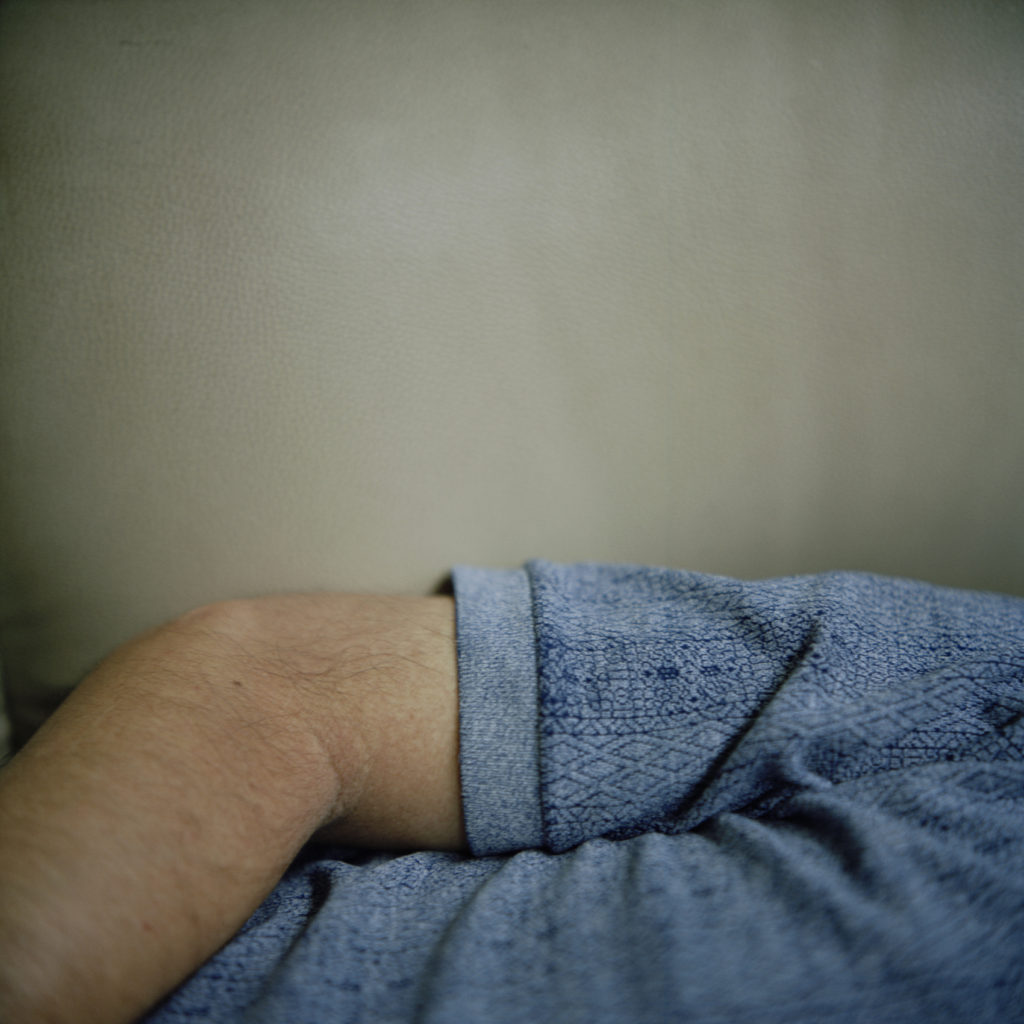



As Time Goes By
-What part of the creative process do you enjoy most, and what do you find most challenging?
To me the most challenging part has always been at the beginning where I need to form a visual aesthetic that works best with a specific photo series I want to do. This process needs a lot of
thinking and time prior to photo taking.I enjoy the actual activity of photo taking, being in the field, finding the scene, setting up my camera, talking to people,waiting for the right light and etc.
The immediate reward is the adrenaline rush I get when I know I have some extraordinary shots in my camera after a long period of the thinking process.
-制作過程において、最も楽しんでいらっしゃることは何ですか?また、最も難しいと感じることは何でしょうか?
私にとって最も難しいのは、やりたい写真シリーズに最適な視覚的美学を形成する必要がある最初の段階です。このプロセスでは、写真を撮る前に多くのことを考え、時間をかける必要があります。私は、写真を撮るという
実際の活動を楽しんでいます。現場に行き、シーンを見つけ、カメラをセットアップし、人々と話し、適切な光を待つことなどです。すぐに得られる喜びは、この長い間熟考期間の後、カメラの中にとんでもない写真が入っ
ていると気付いた時に得られるアドレナリンの放出です。
-Do you have any particular preference regarding cameras (equipment) you use?
No, I do not have a preference, as I see cameras as tools to help me to achieve what I want to convey. I have cameras in different formats, 35mm, 6×6, 6×7, 4×5. I would use each one suitably for a
specific photo series. Each camera format has a different way to operate. To me, this is one of the main factors that will define the visual aesthetic of a photo series.
-使用しているカメラ機材に何かこだわりはありますか?
私は、カメラを自分が伝えたいことを実現するためのツールだと考えているので、あまり好みはありません。私は、35mm、6×6、6×7、4×5といったさまざまなフォーマットのカメラを持っています。それぞれのフォー
マットを、特定の写真シリーズに合わせて使い分けています。カメラのフォーマットごとに、操作方法が異なります。私にとって、これは写真シリーズの視覚的な美しさを決定する主な要因の一つです。

As Time Goes By

As Time Goes By

As Time Goes By

As Time Goes By
-In “Lost In Paradise”, you are focusing on social issues that are happening in Thailand. The beautiful tranquil tones seen in these works give us nostalgic and melancholic impressions.
Is this something you intend to do when producing your works?
Nostalgia has always been one of the key elements in my photography works. I am personally fascinated by old photos from 18-19th century, especially the photos from Asia by John Thomson.
There is this series of photos he did in China where people standing in vast landscapes. Those photos move me emotionally and I would say it inspired the visual aesthetic in “ Lost in Paradise”.
As well as John Thomson, great American documentary photographers like Stephen Shore, Joel Sternfeld and Alec Soth also have an influence in my works, especially the way they capture
American society in a very subtle way and also the beautiful tonality in their works. In additional of what I have just said, studying in the British environment somehow it taught me to really
look at things with critical eyes. It changed how I used to see things before I went there. I came back with a different perspective when I look at my own society.
-“Lost In Paradise”では、タイの社会問題について取り上げていますね。作品に見られる美しく落ち着いたトーンからは、郷愁や哀愁のようなものが感じられるのですが、これは作品制作をする際に意図されていること
なのでしょうか?
私の写真作品において、郷愁は常に重要な要素のひとつです。個人的には、18~19世紀の古い写真、特にジョン・トムソンのアジアの写真に魅了されています。彼が中国で撮影した、広大な風景の中に人々が立っている
写真のシリーズがあります。それらの写真が私の感情を揺さぶり、「Lost In Paradise」の視覚的な美しさに影響を与えたと言っても過言ではありません。ジョン・トムソンだけでなく、スティーブン・ショア、ジョエル・
スターンフェルド、アレック・ソスといったアメリカの偉大なドキュメンタリー写真家たちも、私の作品に影響を与えています。特に、彼らがアメリカ社会を非常に繊細な方法で捉えていること、そして彼らの作品に見ら
れる美しい色調が影響しています。先ほどの話に加えて、イギリスの環境で勉強したことで、なぜか批判的な目で物事を見るようになりました。英国に行く前に見ていた物事の見方が変わりました。帰国後、自分の社会を
見るときに、違った視点を持つようになりました。

Lost In Paradise
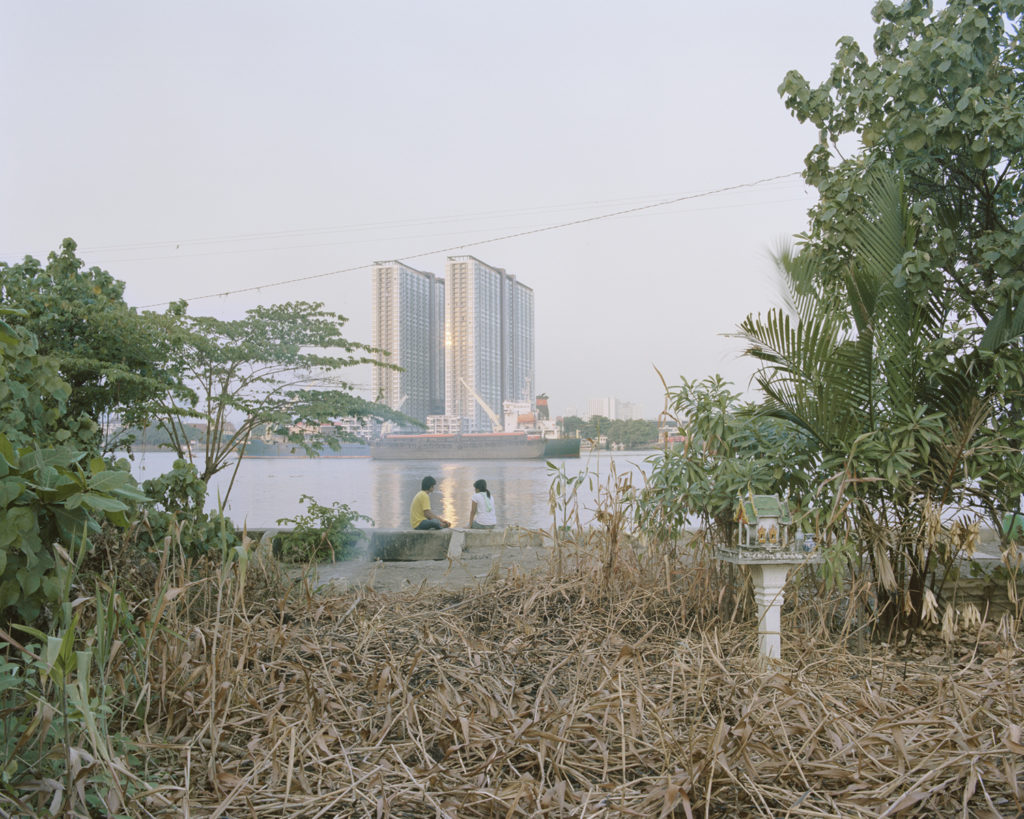
Lost In Paradise

Lost In Paradise
-Are you interested in Japan? Any Japanese Artist you know?
Yes, I do. There are a lot of Japanese influential talents in every industry, fine arts, photography, animation, fashion design and etc. There are a lot of them I admire. For photography, here are some
names in my big list I admire, Yasuzo Nojima, Hiroshi Sugimoto, Ishiuchi Miyako, Rinko Kawauchi, and Masahisa Fukase.
-日本に興味はありますか?好きな日本人アーティストはいますか?
はい、そうですね。美術、写真、アニメーション、ファッションデザインなど、日本のあらゆる業界に影響力のある才能がたくさんいます。私が尊敬している人たちもたくさんいます。写真では、野島康三さん、杉本博司
さん、石内都さん、川内倫子さん、深瀬昌久さんなどが私の尊敬するビッグリストです。
– Please tell us if you have something you want to do in the future or any project you already have in mind.
I have been working on three ongoing projects, and I also have a couple of projects in my head I am thinking about. All of the projects are documentary of Thai society in different aspects and
issues, social issues, political unrest and etc. My goal is to document issues in Thailand as the country progressing, and I hope what I document during my lifetime will be useful as historical records
to the country in the future.
-将来的に何かやりたいことや、今すでに考えていることがあれば教えてください。
私は現在3つのプロジェクトに取り組んでいますが、頭の中で考えているプロジェクトもいくつかあります。どのプロジェクトも、タイのさまざまな側面や問題、社会問題、政治的不安などをテーマにしたドキュメンタリー
です。私の目標は、タイの発展に伴う問題を記録することであり、私が生きている間に記録したものが、将来的にタイの歴史的記録として役立つことを願っています。

Lost In Paradise

Lost In Paradise

Lek Kiatsirikajorn(1977-) studied painting at Silpakorn University in Bangkok. In 2001 he decided to move to England and study photography at The Arts Institute at Bournemouth.
Lek returned to Thailand in 2008 after spending almost seven years studying and working as a fashion photography assistant in the UK. This new period of his life has been inspiring him to produce
photography projects that are directly related to his own society.
Lek is now based in Bangkok, and has been exhibiting internationally from Singapore, Hong Kong, China, France, England, Netherlands, Finland, Russia to USA.
In 2012, Lek was selected by Quai Branly Museum in Paris for the 2012 photography grant. 13 of 22 images from the series, ”Lost in Paradise” which he produced with the grant were included to the
museum’s permanent photography collection.
Lek Kiatsirikajorn(1977年−)は、バンコクのシラパコーン大学で絵画を学びました。2001年には、イギリスのボーンマスにあるThe Arts Instituteで写真を学ぶことを決意し渡英しました。
約7年間、英国でファッション写真のアシスタントとして働きながら学んだ後、2008年にタイに帰国しました。この人生の新たな時期は、彼にインスピレーションを与え、自身が属する社会に直接関係する写真プロジェクト
を生み出すきっかけになりました。
現在はバンコクを拠点に、シンガポール、香港、中国、フランス、イギリス、オランダ、フィンランド、ロシア、アメリカなどで国際的な写真展を開催しています。
2012年、レックはパリのケ・ブランリー美術館の写真部門の助成対象者に選ばれました。この助成金で制作した「Lost in Paradise」シリーズ22点のうち13点が、同美術館の所蔵写真コレクションに加えられました。


